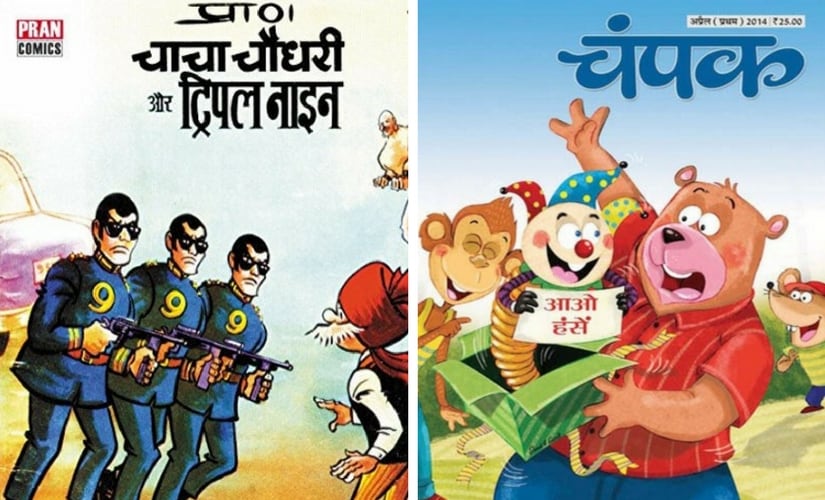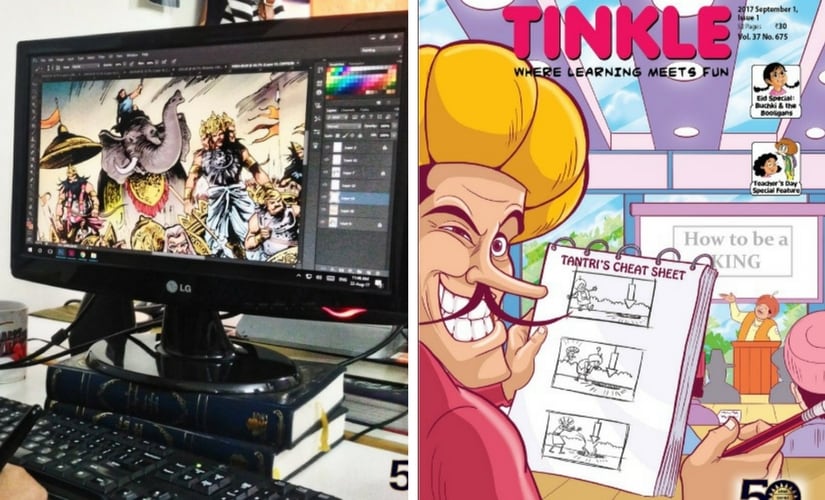Summer vacations in the early 2000s used to be rather boring for me. My sister and I were two restless kids, living in our father’s Defence quarters in Chandigarh, with practically no source of entertainment. Sundays, however, used to be special. Two groggy-eyed girls would wake up every Sunday morning, looking for something, intently. Our waking thought — dash to the parents’ room to get it, first. My sister, being older and much stronger always won the race from our bed to the other room. And then, the rest of the Sunday afternoon was spent differently than other days. There was her (savouring her sweet victory) and there was me — pining for what she had managed to acquire before me, yet again; checking on her every hour to see the status of her progress and complaining to my mother about the injustices meted out to me — all for that one Champak. [caption id=“attachment_4025157” align=“alignnone” width=“825”]  Chacha Chaudhary and Champak. Image from Twitter.[/caption] Evidently, between Tintin and Asterix, there were many faithful patrons of Chacha Chaudhary, Amar Chitra Katha, Champak and so forth. However, nowadays, these Indian comics remain fairly alien to children who, unsurprisingly, exchange Harry Potter trivia like greetings. Given the scenario, it is easily assumed that the readership of Indian origin magazines has suffered beyond measure in the last 10 years. However, most publishers seem to think otherwise. Gulshan Rai, founder of Diamond Comics, which is home to brands like Chacha Chaudhary, Pinki and Billoo says there has been no change in the numbers since when they launched these characters. “If you go to any railway station or book stall, you will find our comics on the stands. We are maintaining the grace of all Diamond characters.” There are certain people who ritualistically pick up a Pinki issue before they step into a train coach and that has not changed, as per Awadhesh Kumar Jha, who has been with Champak for about 10 years, now. “Our print magazines are doing well in tier-2 cities. Champak is published in multiple languages and our network is still, fairly big. However, due to digitisation, our readers have shifted mediums too,” he explains. It is no surprise that with the advent of technology, parents are handing down tabs and kindles to inculcate reading habits in their kids. Therefore, Indian magazines, following suit, have launched their own apps and digital subscriptions to keep up. For children born in the early ’90s, these magazines were more than stories enlivened by illustrations. It was more of a relationship which progressed with every new edition. Reena I Puri, editor of Amar Chitra Katha, corroborates this. “So many people in their 20s and 30s tell me that when they got married and moved, they moved with their collection of Amar Chitra Katha.” While ACK was launched with a mission of educating the young ones about Indian culture and heritage, Tinkle was for the young school child to tell his own stories. “Mr Pai, said ‘Keep God out of Tinkle’,” recalls Puri, with a little snicker. (Anant Pai was the founder of Amar Chitra Katha. Tinkle was acquired by ACK Media in 2007). [caption id=“attachment_4025163” align=“alignnone” width=“825”]  (L-R) The new edition of Ramayana comics in action and Tinkle. Image from Twitter/Amar Chitra Katha/ Tinkle[/caption] One cause of apprehension, could stem from the preconceived notion that magazines like Champak and Amar Chitra Katha are replete with mythological accounts and fables that have little to do with the real world. However, the content of these magazines has also undergone a metamorphosis. With Champak, the principles remain intact — uprooting superstitions. Amar Chitra Katha, too, has caught on with the current sensibilities. “I would rather have a strong woman represented in the pages,” says Puri, who is currently working on another comic based on Sita’s character from Ramayana. Sita, who has traditionally been portrayed as the demure damsel-in-distress, eventually rescued by her Rama, will be depicted as a strong, forthright woman, capable of showering love and wrath in equal measure, in the upcoming project. Some might still be fiercely protective of their Tintins and Uncle Scrooges, however, for the uninitiated there’s a whole world out there, in which Chacha Chaudhary is still the smartest man, Pinki gets work done and Billoo is the Indian archetype of Archie.
Indian comics were the rage in the ’90s — and with Chacha Chaudhary, Champak, Amar Chitra Katha, kids were spoilt for choice. Here’s a look at where these magazines now stand:
Advertisement
End of Article


)



